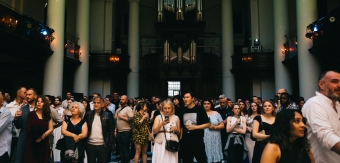Being one of the world’s largest creative communities, Creativepool is in a unique position to understand to what extent the creative industry is recovering from the COVID-19 outbreak.
We had the power to make a difference by asking about the impact of the coronavirus outbreak on businesses, employees and freelancers across the creative industries in the past year. We created two surveys and launched them as a follow-up to our first report: one for full-time employees and freelancers, one for business leaders from agencies, creative services, brands and creative companies. Both included a section for unemployed professionals.
This is one of a series of articles which will look at the impact of COVID-19 on the creative industries. This article will examine the effects of the lockdown on business productivity, flexible working policies, work routines and more. Here is what we found out.
Remote Working
It emerged from our survey that around 60% of the industry is currently working from home [Graph 1 & 2]. This is a significant drop compared to early in April, when 88.5% of all creative professionals was working remotely. As restrictions from governments all around the world were slightly lifted in summer, the industry has started to wander back to the office, though a large majority is still choosing to work remotely.
This number is likely to increase again as we approach the end of the year and government restrictions become tighter. Already in the UK, with the introduction of Tier 1, 2 and 3 restrictions, we can predict that some businesses will be going back to pre-summer working arrangements.

Graph 1 - Members Survey
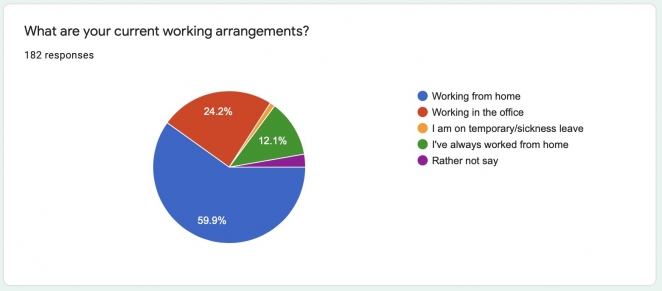
Graph 2- Business Leaders Survey
Perhaps the most surprising fact is that remote working was new for 47.2% of our respondents’ organisations [Graph 3], and that 16% were considering the option pre-pandemic. According to our data, these numbers are likely to shift considerably once the outbreak is finally declared over, with 3 in 4 businesses choosing to support remote working post-pandemic [Graph 4].
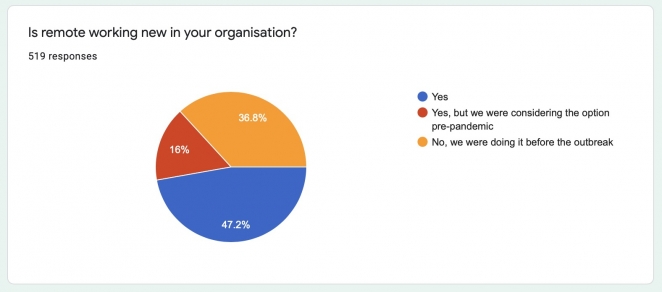
Graph 3 - Members Survey
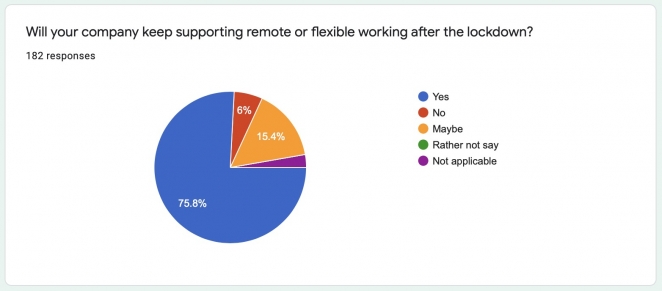
Graph 4 - Business Leader Survey
Here are some comments from our respondents:
“As a result of the pandemic two of my businesses are in the process of changing radically. The pandemic could be the best thing to have happened, forcing us to change. Alternatively, we could go under. It's not clear which yet.“
Creative Director, Design Agency, United Kingdom
“I have preferred working from home in most ways and have been thinking a lot about what I want to do when it comes to having to go back into the office again. I have been trying to pick up freelance jobs to work on in the evening, so that I can start building my own client base.“
Motion Designer, Production Agency, United Kingdom
Business Productivity
Back in April, we found out that most companies had chosen to retain their working staff and only 11.6% had taken advantage of the furlough scheme. The numbers have since gone up considerably. As businesses struggled to maintain their regular levels of productivity, the number of furloughed professionals has risen to 41% [Graph 5].
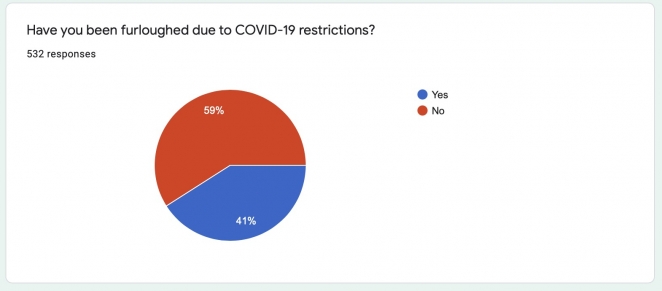
Graph 5 - Members Survey
When we asked business leaders about their office dynamics, over 50% replied that the office was shut down the whole time, but we saw glimpses of a recovery as nearly one-quarter of the respondents stated that they were now back in the office [Graph 6], after an average of 1-3 weeks in furlough [Graph 7]. As mentioned above, this number is unfortunately likely to drop again, as governments introduce new restrictions to tackle the second wave.
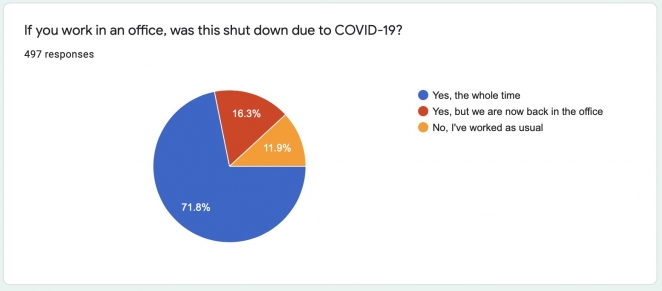
Graph 6 - Members Survey
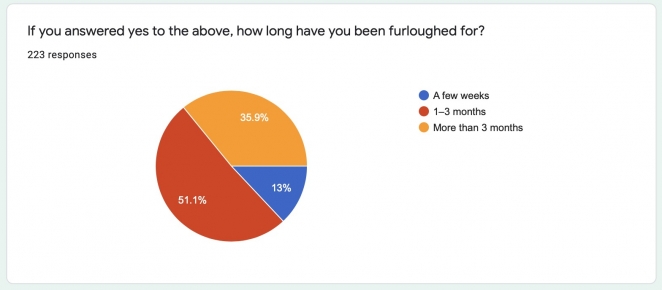
Graph 7 - Members Survey
With less active staff, the pandemic was bound to take a toll on business productivity as well. Some 81.8% of the surveyed business leaders stated that they had no or less work during the pandemic [Graph 8]. As a result, productivity was severely affected in almost 1 in 3 the cases [Graph 9].

Graph 8 - Business Leaders Survey
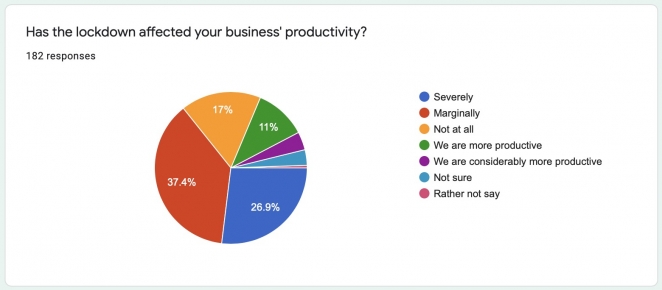
Graph 9 - Business Leaders Survey
We will take a closer look at client retention in separate parts of the report, for both freelancers and agencies.
Here are some comments from our respondents:
“Brainstorming has been more difficult. Driving the ideas forward without everyone in the same room is a new challenge. More emphasis has been put on personal ideas time in the lead-up to the actual session. Also, striking a balance between understanding an employee’s workload, capability, actual work being done, situation at home and COVID stress has been equally difficult. Expecting productivity to drop right from the start helped with this."
Founder & Creative Partner, Creative Agency, United Kingdom
“I never thought I could be productive in a work from home setup, but our company has been very supportive, and they are not restrictive at all. I think it also helps a lot with our productivity.”
Front-end Web Developer, Web Development Company, Philippines
Mental Health
It is easy to imagine how remote working has affected the mental health of the industry. Just a few weeks ago we asked some of the most influential leaders in the industry about their experience coping with their team’s mental health and were able to paint a clear picture: the industry is in bad shape, but there’s hope.
This is true of all sectors in the industry. Some responses suggest a strong spirit of adaptation [Graph 10, Graph 11], with nearly 45% stating that the pandemic has not affected individual productivity and with 1 in 3 professionals being extremely comfortable with their new routine.
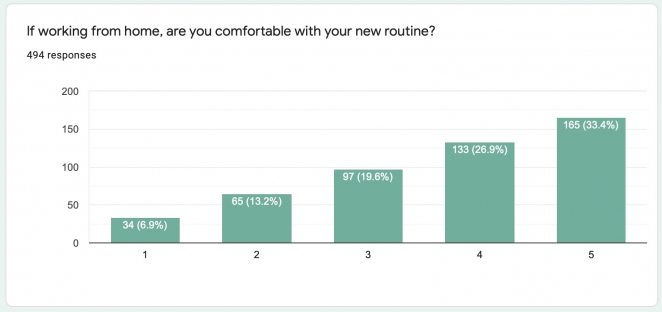
Graph 11 - Members Survey
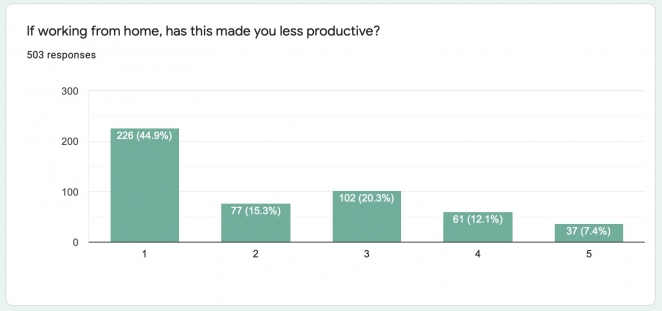
Graph 11 - Members Survey
However, levels of stress have gone up. 83.8% of freelancers have been moderately to considerably affected by the pandemic and nearly 80% of employed/furloughed professionals have reported higher levels of stress on average [Graph 12, Graph 13].
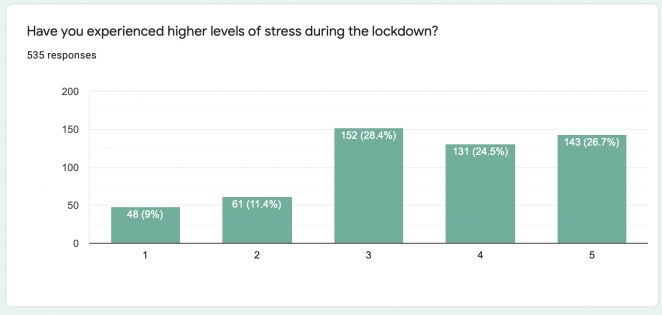
Graph 12 - Members Survey
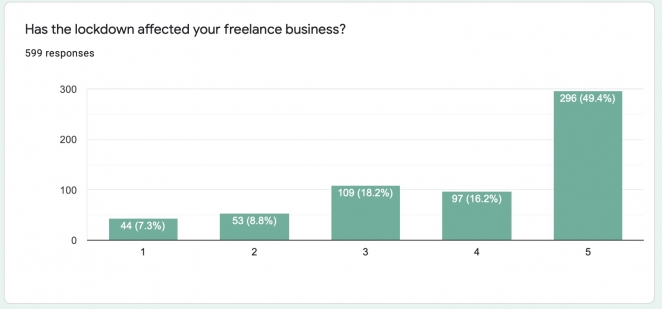
Graph 13 - Freelancers Survey
We will have the chance to make a deeper analysis of the consequences of COVID on mental health in a separate part of the report. Here are some comments from our respondents in the meantime:
“This is hard for the people who work in the industry. But we are innovating in processes to give more results and we are taking care of the mental health of our people.”
Creative Vice-President, Creative Agency, Mexico
“My mental health did go for toss due to elevated stress levels and the lockdown. I'm constantly worried about money, savings, my parent's health and not being able to get a promotion or raise.”
Graphic Designer, Creative Services Company, India
Creativepool Coronavirus Survey Report – Part 2
- Report - Will the creative industries recover from the COVID crisis?
- Most freelancers will need nearly a year to recover from COVID-19
- Only about 40% of agencies have retained their clients during the pandemic
- Impact on unemployed professionals (Coming soon)
- Impact on the job market (Coming soon)
- Impact on mental health (Coming soon)




